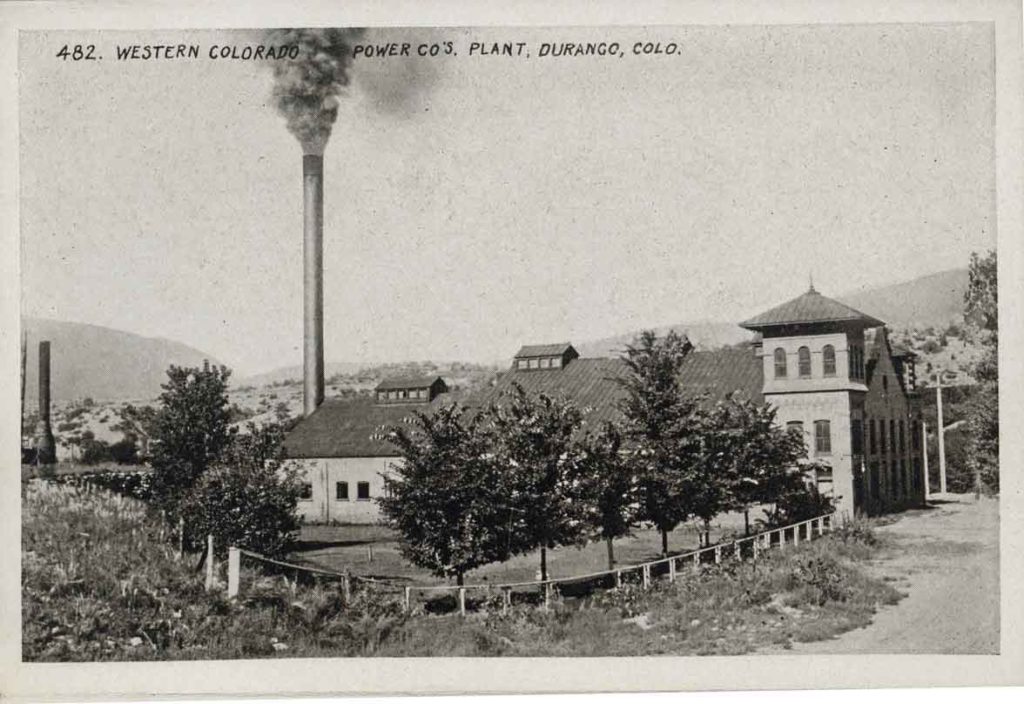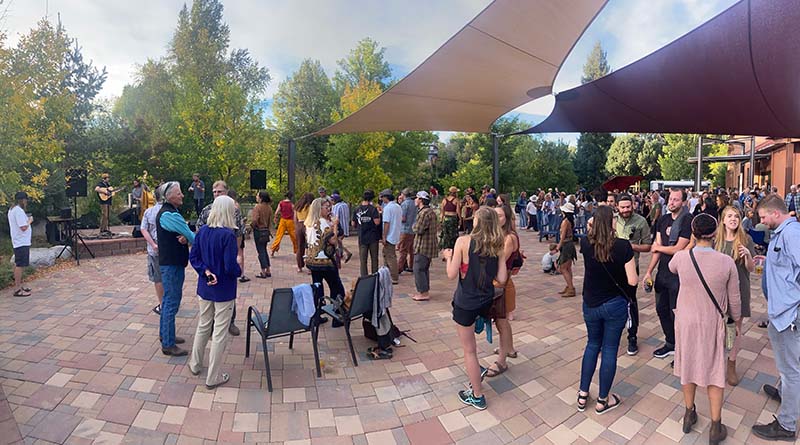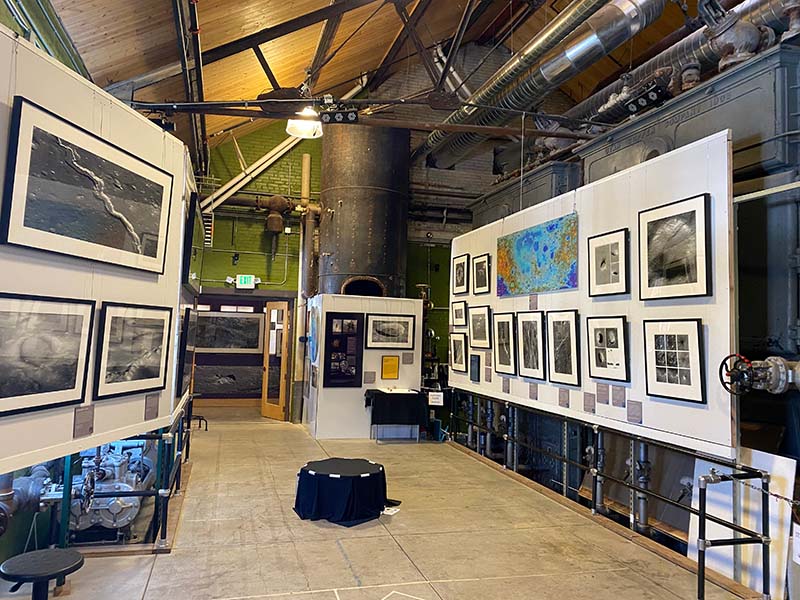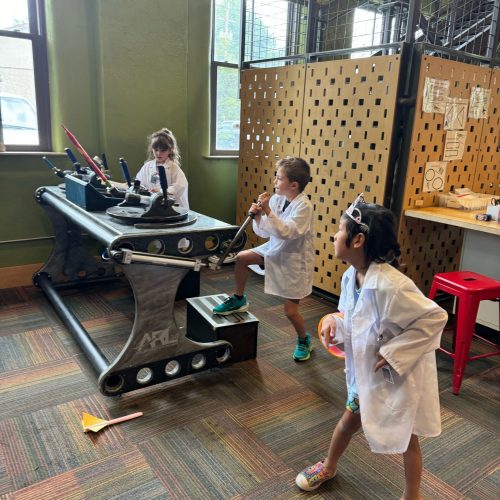Energy — Past, Present, and Future
It’s a tale of rivalry and risk, of enterprise and innovation. How did the smelting town of Durango become home to one of the earliest coal-fired alternating current (AC) electric plants in the world? Why was this once-handsome 1893 power plant abandoned to become a blight on precious downtown Animas River property? And how did metamorphosis of the building and grounds transpire?

Early Western Innovation
In 1892, the Durango Light and Power Company embraced a fledgling technology known as AC power, the object of both marvel and derision. Outlawed as too dangerous in some eastern states, the company’s investment soon became the standard for powering the world. The organization’s founders installed this new technology in a brick building crafted with Mission-style architecture, the first known use of this style for commercial construction outside California. Once completed, the plant provided AC power for Durango street lights before it was available in the great cities of the East.
The plant powered Durango through the town’s early development and ultimately became part of the western Colorado power grid. Reflecting the West’s changing emphasis on raw energy sources, it was converted from coal-fired to gas-fired in the mid-1940s. Its size and adaptability made it useful long after other early power plants had been torn down and replaced. It eventually became part of Western Colorado Power, which supplied electricity to Colorado’s Western Slope.

Shut Down and Unused
In the mid-1970s, the plant was closed and boarded up, and the site became an eyesore. The City of Durango eventually purchased it but was unable to find a use for the place, especially as renovation meant challenges such as asbestos abatement and removal of decades of pigeon droppings. Tearing the plant down was under discussion, and the Durango Powerhouse became one of Colorado Preservation, Inc.’s Most Endangered Places.
By 1999, the Children’s Museum of Durango, founded in 1994, had outgrown its 1,100 square foot attic facility. Needing space to serve older visitors and accommodate steady growth, the organization prepared a comprehensive business plan that proposed converting The Powerhouse and its grounds into an interactive science center. In 2002, the Durango City Council passed a resolution supporting the rebirth of the Durango Powerhouse as The Powerhouse Science Center.
The Children’s Museum established a separate board to manage The Powerhouse Science Center project while it continued to operate in its cramped quarters. Beginning in 2002, Powerhouse volunteers were awarded grants for historical renovation, asbestos removal, and site improvement from the State of Colorado. The cleanup, renovation, and restoration of the exterior of the building were completed in 2006, and The Powerhouse has since undergone a phased transformation.
Riverfront Revitalization
As it experienced its rebirth, The Powerhouse formed an integral part of the revitalization of Durango’s downtown riverfront. The grounds came alive with children climbing outdoor exhibits, adults sipping espresso, and friends bicycling in to share a picnic lunch. In the evening, pedestrians began to enjoy strolling beneath Victorian street lamps shimmering along the Animas. Today The Powerhouse offers a variety of ways to enjoy spending time in downtown Durango. It ties Main Avenue to the river and serves as a downtown anchor, attracting tourists and locals alike.
Phase II fundraising goals were met in 2010 with construction already underway. The Powerhouse Science Center opened to the public on February 23, 2011 and threw a grand opening celebration (complete with robot ribbon cutting) on July 17, 2011. And what do you suspect comes after phase II? Phase II.5 and phase III, of course. It’s an ever-evolving adventure you won’t want to miss. Learn about membership, find out how to support our mission and become a part of the story!



